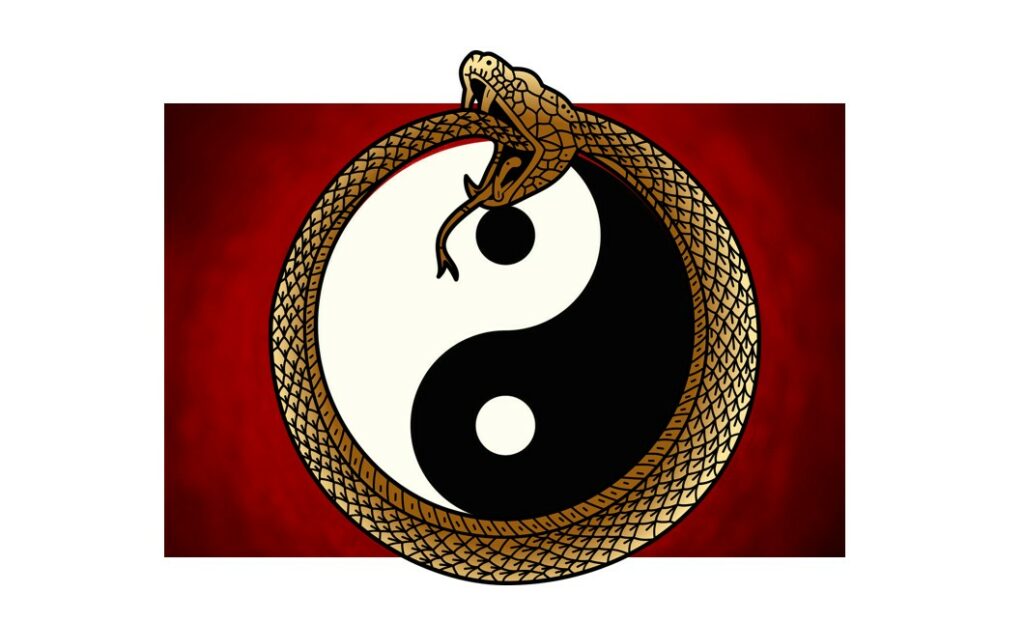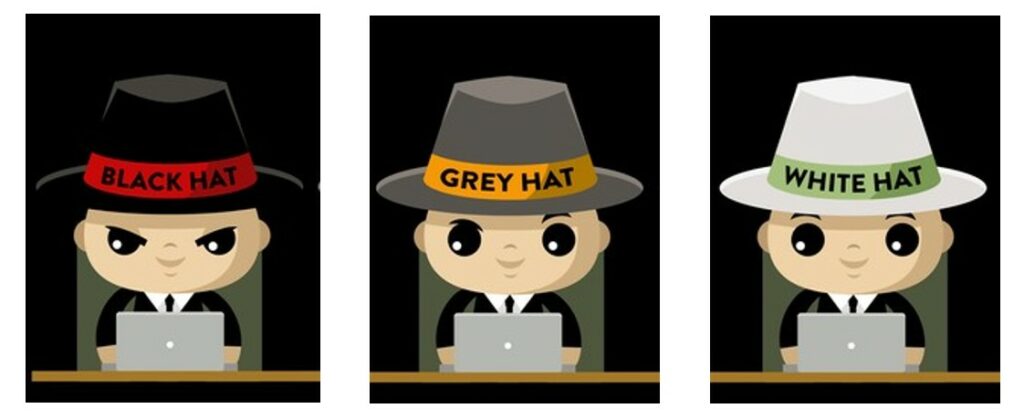
The meaning of ” hacker ” has deep roots. It derives from the English “to hack,” meaning to chip away, cut, strike, or cut. It’s a powerful image, that of a farmer breaking up clods of earth with his rough hoe, revealing what lies beneath the surface. Likewise, a hacker can explore the darkest recesses, challenging their limits and bringing to light powerful innovations unlike anything anyone has ever seen before.
But who are hackers really?
In this article, we’ll explore the hacker from every angle. We’ll look at who they are, their motivations, and their role in today’s digital world. We’ll uncover their impact on cybersecurity, distinguishing between those working to build a more secure digital environment and those who threaten it.

The term “hacker” conjures up images of enigmatic figures. Sometimes they’re idolized as brilliant innovators, other times demonized as digital threats. This duality reflects the complexity of those who possess deep knowledge in a field and an extraordinary capacity for lateral thinking . This ability allows them to solve problems with new and unconventional perspectives.
The crucial difference lies in intent . Some hackers use their skills to protect, improve, and innovate. Others exploit them to destroy, steal, or sabotage . Like physics, which can illuminate with nuclear energy or devastate with an atomic bomb, hacking is a powerful and neutral tool. Its impact depends solely on how it is used.
Hacking isn’t limited to the digital world . It’s an art that spans every human discipline. When a person pushes the boundaries of what’s known and breaks convention with ingenuity and creativity, they embody the true spirit of hacking . They become innovators in their field.
Being a hacker means challenging the status quo. It means looking for solutions where others see problems . It’s a skill that pushes you to overcome barriers, creating new possibilities . And it’s precisely this vision that, for better or worse, has the power to change the world.
And it has always changed the world.
Hacking is therefore a form of thinking that transcends traditional boundaries . It is the art of reinvention, of discovering new ways where others see insurmountable barriers. In mathematics, it can mean finding an elegant proof for a complex problem. In physics, it can mean discovering unexpected applications of known laws. In politics, it can mean redefining the concept of participation or governance. Even in music, hacking manifests itself in experimenting with new sounds and compositional techniques .
This ability to break the mold makes hacking a transversal force , capable of applying itself wherever there are rules, structures, or systems. It is a driver of progress, but also a critical lens that allows us to question what is taken for granted. When conventions become constraints, hacking challenges them, paving the way for innovation.
An extraordinary example of hacking in the world of music is Ludwig van Beethoven , who broke every rule and created compositions the world had never heard before. His Ninth Symphony , written when he was completely deaf , represents one of the greatest musical works in history. Beethoven “hacked” the language of music, overcoming the limitations imposed by his physical condition and reinventing the very structure of the symphony. His ability to create something absolutely new, starting from an extremely difficult context, consecrates him as a true art hacker.

In the world of politics, a great example of hacking for good is Mikhail Sergeyevich Gorbachev , the last leader of the Soviet Union. Gorbachev “hacked” the rigid Soviet political system through his radical reforms, such as glasnost (transparency) and perestroika (restructuring). These changes destabilized communism from within, bringing greater openness and modernization to a system known for its closed-mindedness and rigidity. His revolutionary vision contributed to the end of the Cold War, demonstrating how political hacking can radically transform the course of history.
Hacking, however, isn’t always for good. Adolf Hitler is an example of how this ability can be used destructively . Hitler skillfully exploited the weaknesses of the Weimar Republic’s democratic system, manipulating propaganda, information control, and fear to consolidate his power. Like a hacker finding a flaw in a system, Hitler identified and exploited the social and institutional vulnerabilities of his time, transforming democracy into a totalitarian dictatorship with devastating consequences.
The ability to “hack” goes beyond technology: it manifests itself wherever there is a system, a rule, or a convention to be overcome. Mathematicians who revolutionize theorems, physicists who redefine the laws of the universe, artists who create new expressive languages: all these individuals are, in their own way, hackers.

But like any great skill, hacking carries inherent risk. It’s a neutral tool, one that can be used to build or destroy, to innovate or manipulate. Understanding this duality is crucial to recognizing the value of hacking in all its forms and addressing the challenges it poses.
At the root of hacking is often a pure, intrinsic motivation: curiosity .
Hackers are driven by the desire to explore complex systems, discover how they work, and identify ways to overcome or improve them. As we saw at the beginning, a farmer armed with his “mighty hoe” tries to turn the soil, so hackers seek to understand things from the inside out in order to then improve and overcome them . For many, it’s a form of intellectual challenge that stimulates ingenuity and allows them to acquire advanced technical skills.
This curiosity is closely related, though not exclusively, to a love of technology. Passionate hackers see code as a universal language and computer systems as puzzles to be solved. For them, the line between play and work is blurred: hacking becomes an art and a way to express one’s creativity. A great hacker, Richard Stallman, said , “Playfully doing something difficult, whether it’s useful or not, that’s hacking.”

A common trait among many hackers is lateral thinking , a way of reasoning that leads them to solve problems in unconventional ways. This approach helps them generate innovation, often finding unique and unexpected solutions . Overcoming technological obstacles, exploring new frontiers, and breaking the rules is what drives many hackers to excel in their field.
Another relevant aspect concerns the similarity between hacking and Asperger’s syndrome , an autism spectrum disorder that leads to intense concentration on specific tasks. Hackers, often afflicted by this syndrome, tend to focus exclusively on computers and information systems, dedicating hours, days, and sometimes weeks to solving complex problems. This behavior makes them particularly skilled at solving technical puzzles and deeply understanding how systems work, driving them to create innovative solutions.
The word “hacker” is often misunderstood, associated exclusively with illicit or malicious activities. In reality, the concept of hacking originated as a skill , a demonstration of ingenuity and intelligence to overcome obstacles or innovate creatively. This ability can be used for both constructive and destructive purposes, but at its core is always the art of exploring, understanding, and improving systems, maximizing their potential.
Hacker culture originated within the Tech Model Railroad Club (TMRC) at MIT , a student workshop for model railroad enthusiasts. Here, in the 1950s, figures like Peter Samson, Jack Dennis, and Alan Kotok (TMRC members) enjoyed modifying and improving the complex systems of electric trains, experimenting with new methods to control their movements. In club parlance, the term “hack” referred to an ingenious solution to overcome a technical problem or improve a system.
With the arrival of computers on campus, these same members shifted their curiosity and skills to calculators. Hacking pioneers began exploring computers not to destroy them, but to better understand them, pushing their limits to explore new possibilities. Among these, Richard Greenblatt stands out , considered one of the first hackers in history, who contributed to the creation of complex and innovative programs.
The hacker movement didn’t stop at toy trains or calculators. With the work of figures like Professor John McCarthy at MIT, a new frontier opened up: artificial intelligence. McCarthy, one of the fathers of AI, demonstrated how hackers’ innovative thinking could be applied to develop systems capable of simulating human reasoning.

Today, the myth of the hacker is rooted in this culture of exploration and experimentation. The term doesn’t define a criminal, but a brilliant mind, capable of tackling complex problems with intelligent solutions. However, like any skill, hacking can be used for different purposes: some use these skills to protect systems and build technological innovations, while others employ them to violate, steal, or destroy.
This duplicity is what makes the world of hackers so fascinating and, at the same time, controversial.

The history of hackers is closely tied to this duality, recalling the ancient philosophy of yin and yang . Good and evil intertwine and form an ouroboros, the serpent biting its own tail, symbolizing the eternal cycle of creation and destruction. Good cannot exist without evil, and vice versa: every advance in cybersecurity often arises in response to a threat, just as every sophisticated attack stimulates the development of new defensive technologies.
Since the dawn of the digital age, the figure of the hacker has embodied this ambivalence. In the early 1960s and 1970s, hackers were often students or university researchers who experimented with computers to improve their functionality (as seen in the Tech Model Railroad Club in the previous chapter). Their actions were driven by curiosity, innovation, and a desire to share knowledge. However, as technology evolved, some began to exploit their skills for personal gain, giving rise to the dark side of hacking.
Hackers are divided into several categories, each with a distinct bias towards the legality and ethics of their actions. On one side, there are ethical hackers, who work to protect companies and governments from cyberattacks, and on the other, criminal hackers who exploit the same skills to gain illicit gains.

Among these, there is an intermediate figure: gray hat hackers , who walk a tightrope, using their ingenuity to find flaws in systems, but sometimes breaking laws or violating ethical boundaries.
Hackers are one of the most fascinating and controversial figures of the digital age. Their actions can be driven by a variety of motivations, ranging from pure curiosity and passion for technology to economic, political, or ideological ends. Understanding what drives hackers is crucial to understanding the many facets of this universe.

Not all hackers are driven by curiosity or experimentation: some are motivated by financial reasons , and this is where “cybercrime” comes from. This subgroup is divided into individuals or highly organized groups, often structured like black market companies.
Profit-driven cybercriminals aim to exploit system vulnerabilities to extort money or steal data. Among the most notorious groups are LockBit, Qilin , and Stormous. These groups are known for targeted attacks against companies, institutions, and critical infrastructure. They operate with a clear business model, often using Ransomware-as-a-Service (RaaS). This allows even less experienced criminals to engage in cybercrime and extort money.
Their motivations are financial. The promise of quick profits, supported by the anonymity of the dark web and cryptocurrencies, makes them a growing threat. Their motto is: less effort, maximum returns.
Another significant category is that of state-sponsored hackers (often also referred to as APT groups, or Advanced Persistent Threat groups) . These are individuals or groups that operate on behalf of governments to pursue strategic objectives. These hackers are instruments of geopolitical power, used to steal intellectual property, sabotage critical infrastructure, or influence public opinion through disinformation.
These include hackers recruited directly by governments or intelligence agencies , as well as groups affiliated with state entities. These affiliations are particularly advantageous when it comes to attributing responsibility for an attack, as they allow for a degree of ambiguity. In many cases, it can be argued that the accusations are unfounded or part of a disinformation or media warfare strategy. Examples of these groups include:
Just to name a few.

A prime example is Edward Snowden , the former US National Security Agency (NSA) hacker who exposed the global surveillance program known as Datagate . His revelations exposed the extent of US espionage operations, demonstrating how every nation has legions of hackers ready to engage in what is now defined as espionage and cyberwarfare .
From Russia to China, from the United States to Iran, cyberspace has become a new theater of global conflict, where hackers can conduct digital attacks to destabilize economies and influence political decisions.

Finally, there is a category of hackers driven by political or ideological motivations : hacktivists . Hacktivism (a portmanteau of the words “hacking” and “activism”) is a form of protest used by individuals or groups who use their computer skills to support specific causes, often against governments, corporations, or organizations they consider oppressive or unjust.
A prime example is Anonymous , the decentralized hacker collective known for its Guy Fawkes mask. Inspired by the film ” V for Vendetta ,” these hackers have ranged from denouncing human rights violations to fighting censorship, with operations such as protesting the Church of Scientology or attacking government websites in response to controversial policies.
Cyber hacktivism demonstrates that hacking can be a powerful tool for social struggle, giving voice to those who oppose systems they perceive as oppressive. However, as with any form of hacking, the intent is not always clear, and the consequences can be controversial.
Curiosity, profit, and activism are the primary motivations that drive hackers to act. While these categories help us understand the different dynamics of hacking, the lines between them are often blurry. Hackers, like the systems they explore, are complex and constantly evolving. Interpreting their motivations requires a deep and multifaceted perspective, capable of grasping both the opportunities and risks of this modern “skill.”
The importance of cybersecurity education
As we’ve seen, ethical and criminal hackers share the same skills, but differ in motivations, intentions, and consequences. Both manipulate and exploit vulnerabilities in systems, but their intent distinguishes cybersecurity “heroes” from “cybercriminals.”
Ethical hackers are professionals who use their skills to improve security and protect data. Driven by technological curiosity, they work legally for government agencies, companies, and non-profit organizations. Their goal is to solve problems and identify vulnerabilities, helping to make systems more secure. Ethical hackers operate with the permission of the system owner, often through penetration testing.
Criminal (or “black hat”) hackers use their skills illegally, for profit, revenge, or protest. They violate privacy, steal information, and cause enormous economic damage. Some operate alone, others as part of groups, such as ransomware gangs. Their goal is to exploit vulnerabilities for their own benefit, with no regard for security. Here are some of the most well-known ethical hackers:
Many criminal hackers, after being arrested, have managed to redeem themselves and become security experts. Here are some of the most notorious criminal hackers who have managed to transform themselves:
These hackers, despite having a criminal past, have turned their experiences into a positive career, contributing to the protection of global digital infrastructure.
The world of hackers is complex and multifaceted. It’s a microcosm where motivations, ethics, and intent intertwine. This gives rise to a variety of players, from cybersecurity champions to cybercriminals. What emerges is how the same skills can be used for constructive or destructive purposes, depending on the circumstances and individual choices.
Ethical hackers, driven by curiosity and a desire to improve system security, position themselves as allies in the fight against cyber threats. Their work is essential to protecting sensitive information and ensuring the secure operation of digital infrastructures. This goal has taken on growing importance in an increasingly connected world.
On the other hand, criminal hacker groups, with their devastating actions, continue to pose a real threat to businesses, governments, and individuals. Despite the differences between ethical and criminal hackers, it’s interesting to observe how some of the latter, after having embarked on a criminal career, can redeem themselves and become respected cybersecurity experts, demonstrating that the line separating “good” from “bad” is not always clear.
In the future, the figure of the hacker will likely continue to evolve, remaining at the center of debates on security, ethics, and digital law.
Ultimately, it is ethics that defines the direction of our actions, transforming the power of technology into an instrument of progress or destruction.
Follow us on Google News to receive daily updates on cybersecurity. Contact us if you would like to report news, insights or content for publication.